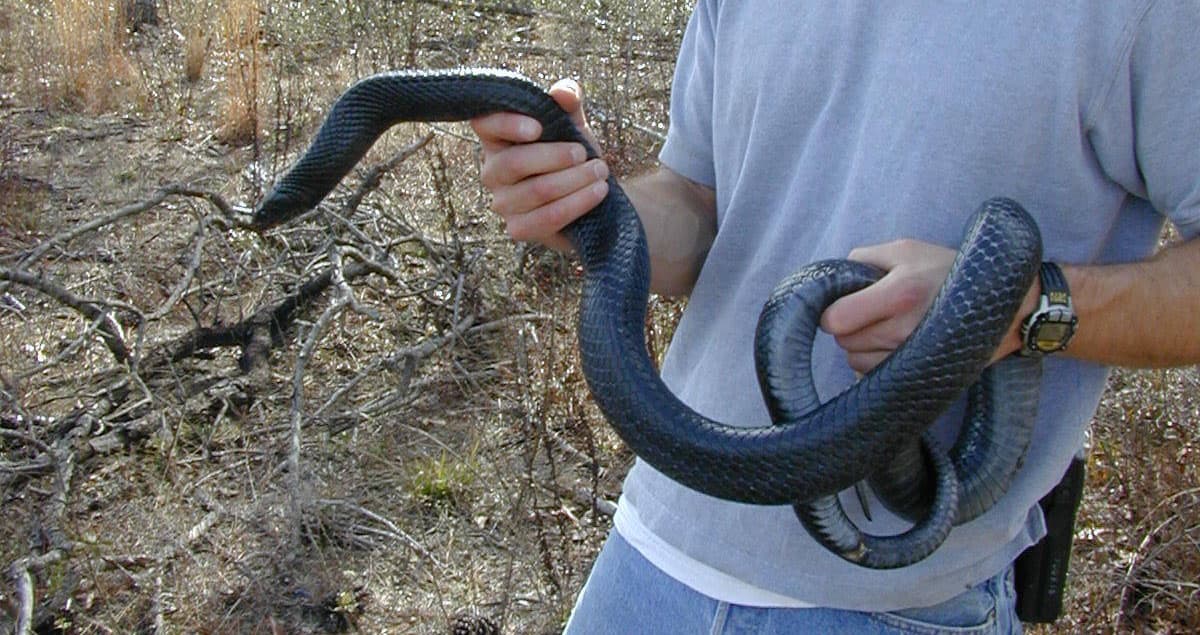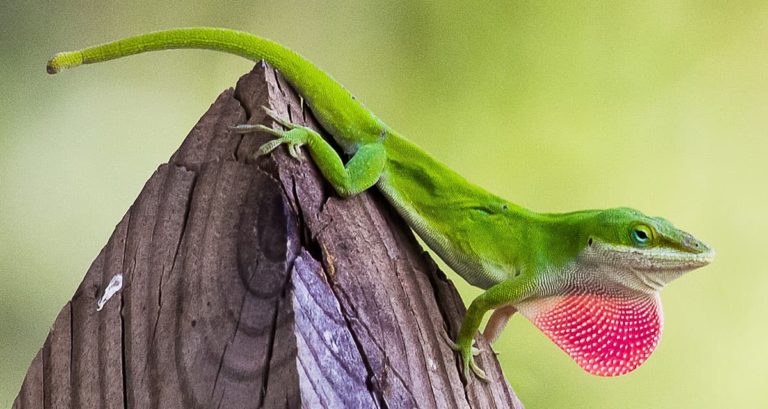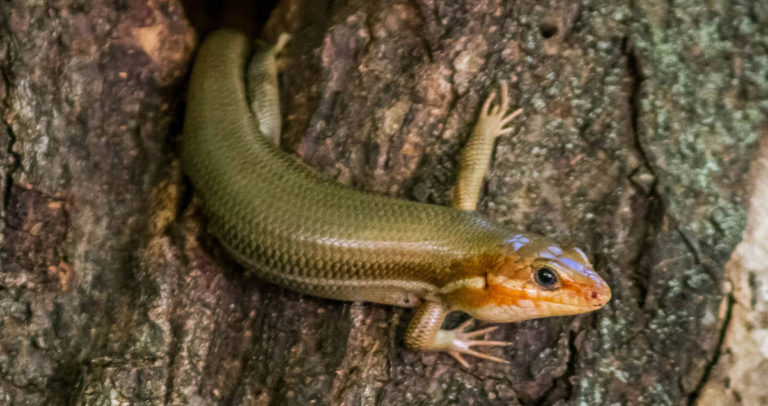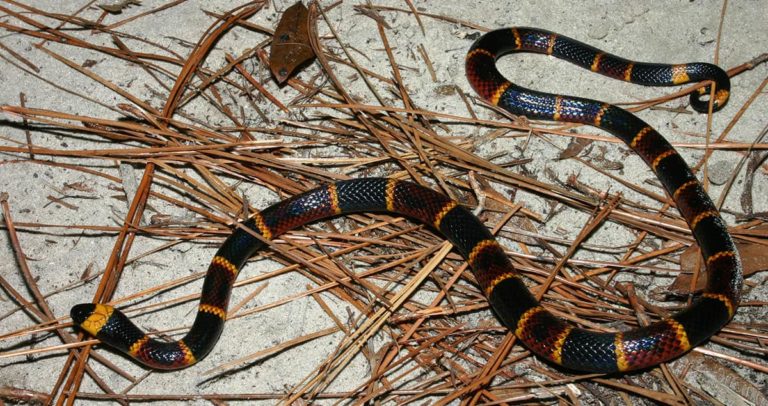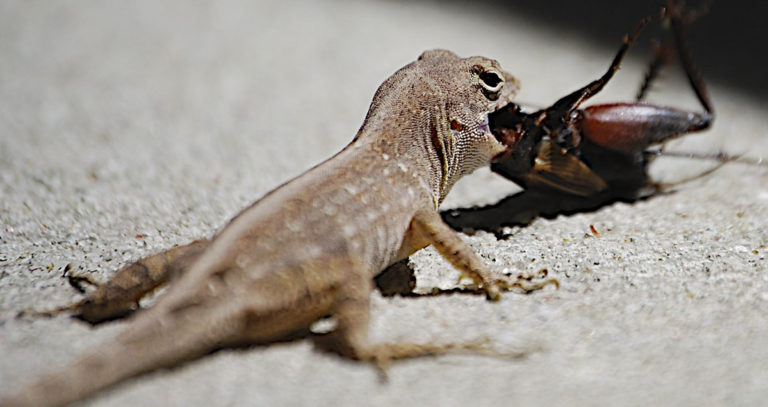Georgia’s Ecologically Important Indigo Snake
The Eastern Indigo Snake (Drymarchon couperi) is a fascinating and ecologically important reptile native to Georgia. This species is the longest native snake in North America, with adults reaching lengths of up to 8.5 feet. Its striking, iridescent blue-black coloration and impressive size make it a standout among Georgia’s native snake species.
Physical Appearance
The Eastern Indigo Snake’s most notable feature is its striking coloration. Adult snakes have a blue-black, iridescent dorsal surface with a lighter, sometimes reddish-orange or cream-colored chin and throat. Juvenile snakes exhibit a similar coloration but may have a more uniform, duller appearance. As they mature, their colors become more vibrant and iridescent. Eastern Indigo Snakes have smooth, shiny scales that contribute to their glossy appearance.
Habitat and Distribution
Eastern Indigo Snakes are primarily found in the southeastern United States, with Georgia being a key part of their range. They inhabit a variety of habitats, including sandhills, hardwood forests, scrub, and even wetlands. Indigo Snakes are known to utilize gopher tortoise burrows for shelter and thermoregulation, making the conservation of gopher tortoise habitats crucial for their survival.
Diet and Predation
Eastern Indigo Snakes are carnivorous and have a varied diet that includes small mammals, birds, amphibians, and other reptiles, such as snakes and lizards. They are known to prey on venomous snakes, including rattlesnakes, as they are immune to the venom. Indigo Snakes are considered top predators in their ecosystems, playing a vital role in maintaining a balance between prey and predator populations.
Reproduction
The Eastern Indigo Snake’s breeding season occurs from October to February, with females laying eggs between April and June. They typically lay 4 to 12 eggs, which are deposited in a hidden location such as a rotting log or a burrow. The incubation period lasts for approximately two to three months, after which the hatchlings emerge.
Conservation Status
The Eastern Indigo Snake is listed as a threatened species under the U.S. Endangered Species Act and is considered a high-priority conservation species in Georgia. Their populations have declined due to habitat loss, fragmentation, and degradation, as well as direct persecution by humans. Conservation efforts focus on habitat restoration and management, as well as public education to raise awareness about the importance of these snakes in Georgia’s ecosystems.
Encounters with Indigo Snakes
While Eastern Indigo Snakes are not aggressive and pose no threat to humans, it is essential to respect their space and observe them from a safe distance. If you encounter an Indigo Snake in the wild, admire its beauty and appreciate its vital role in Georgia’s ecosystems, but remember to give it the space it needs to thrive.
The Role of Eastern Indigo Snakes in Georgia’s Ecosystems
Eastern Indigo Snakes play a critical role in maintaining the health and balance of Georgia’s ecosystems. As top predators, they help regulate the populations of their prey species, including rodents and other small mammals that can have negative impacts on agriculture and human health if their populations go unchecked. By preying on venomous snakes, Indigo Snakes also indirectly reduce the risk of dangerous encounters between venomous snakes and humans or pets.
Furthermore, their reliance on gopher tortoise burrows highlights the interconnectedness of Georgia’s native species. The conservation of gopher tortoise habitats not only benefits the tortoises themselves but also supports a diverse array of other species that rely on these burrows, including the Eastern Indigo Snake. In this way, efforts to conserve Indigo Snake populations also contribute to the overall health and biodiversity of Georgia’s ecosystems.
Captive Breeding and Reintroduction Programs
To help bolster the populations of Eastern Indigo Snakes in the wild, several organizations are engaged in captive breeding and reintroduction programs. These programs aim to raise Indigo Snakes in controlled environments and release them back into suitable habitats to establish self-sustaining populations. These efforts, combined with ongoing habitat restoration and management initiatives, provide hope for the future of this remarkable snake species in Georgia.
Responsible Wildlife Viewing Practices
For wildlife enthusiasts and nature lovers, the opportunity to observe an Eastern Indigo Snake in the wild can be a thrilling experience. However, it’s essential to practice responsible wildlife viewing to minimize disturbance to the animals and ensure their wellbeing. Here are a few tips for responsible snake viewing:
- Maintain a safe distance: Observe snakes from a respectful distance to avoid stressing the animal or provoking a defensive reaction.
- Do not handle or touch the snake: Handling snakes can cause injury to both the snake and the person. It’s always best to admire these fascinating creatures from a safe distance.
- Leave the habitat undisturbed: Be mindful of your surroundings and avoid trampling vegetation or disturbing other wildlife.
- Share your knowledge: Educate others about the importance of Eastern Indigo Snakes and other native reptiles in Georgia’s ecosystems, and encourage responsible wildlife viewing practices.
By following these guidelines and promoting responsible wildlife viewing, you can help ensure the continued survival of Eastern Indigo Snakes and other native species in Georgia for generations to come.
Final Thoughts
Eastern Indigo Snakes are an important part of Georgia’s biodiversity and play a crucial role in the ecosystems they inhabit. Their unique appearance, gentle nature, and fascinating behaviors make them an intriguing subject for reptile enthusiasts and conservationists alike. By understanding the Eastern Indigo Snake species found in Georgia, their habitats, behavior, and conservation status, we can better appreciate these remarkable reptiles and take action to protect them for future generations.
As we continue to learn more about Eastern Indigo Snakes in Georgia, it is crucial for researchers, conservationists, and the public to work together to ensure their survival. By supporting conservation efforts, creating suitable habitat, and spreading awareness about the importance of these snakes, we can help ensure that these fascinating reptiles continue to thrive in Georgia’s diverse ecosystems.

